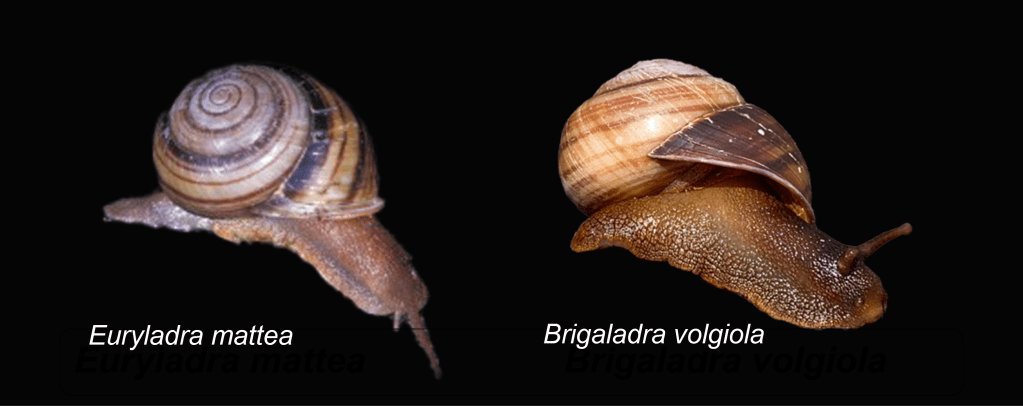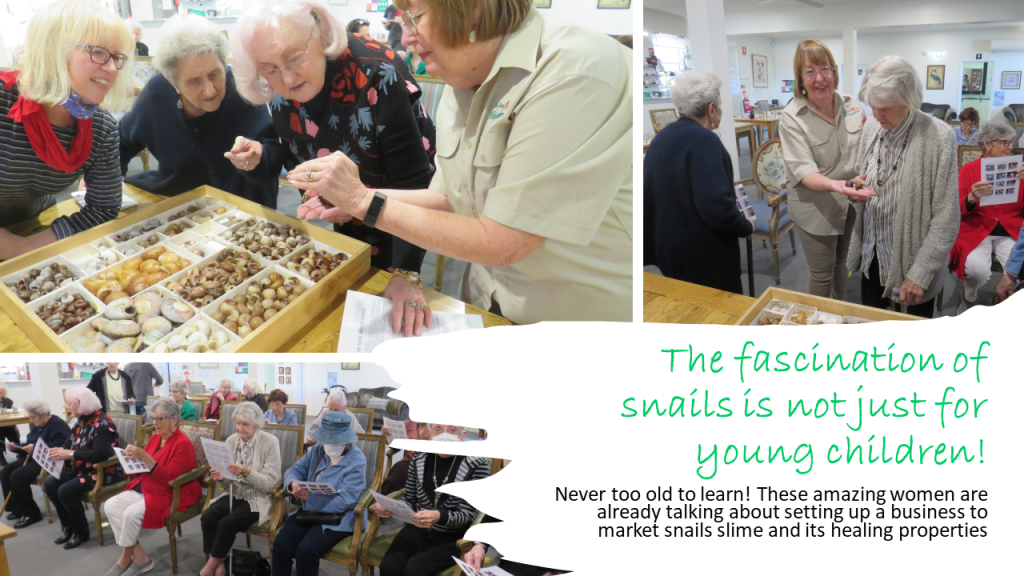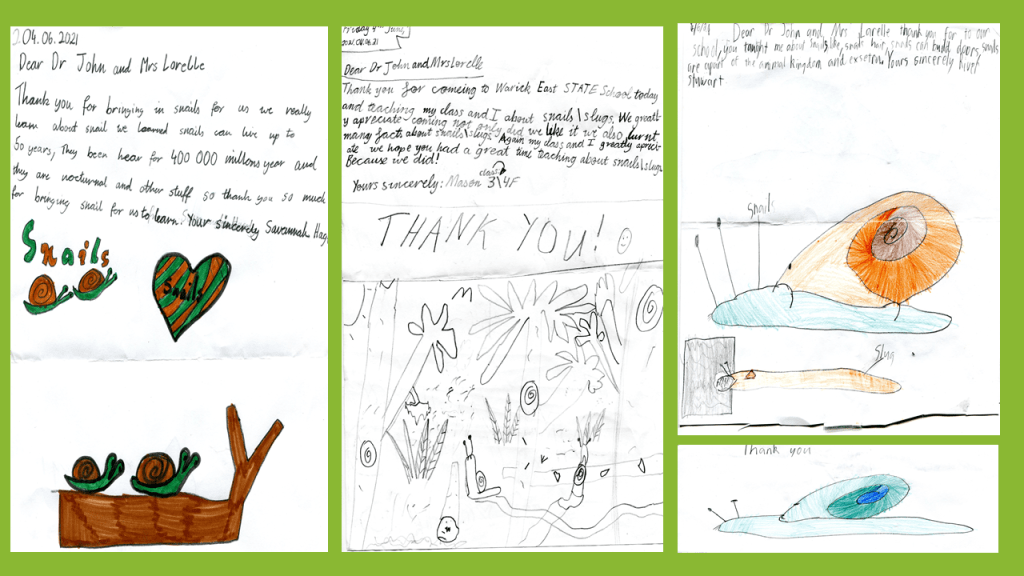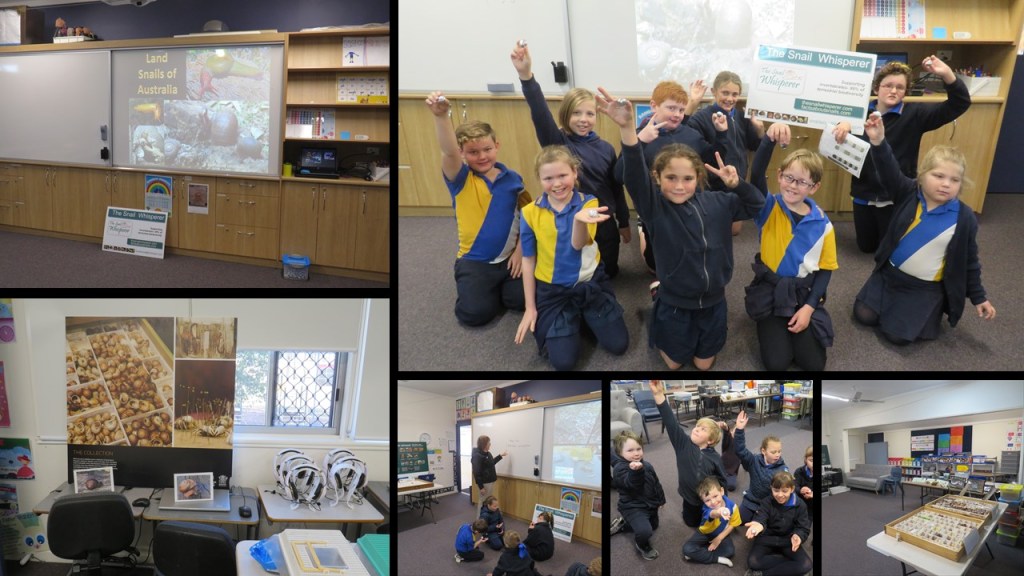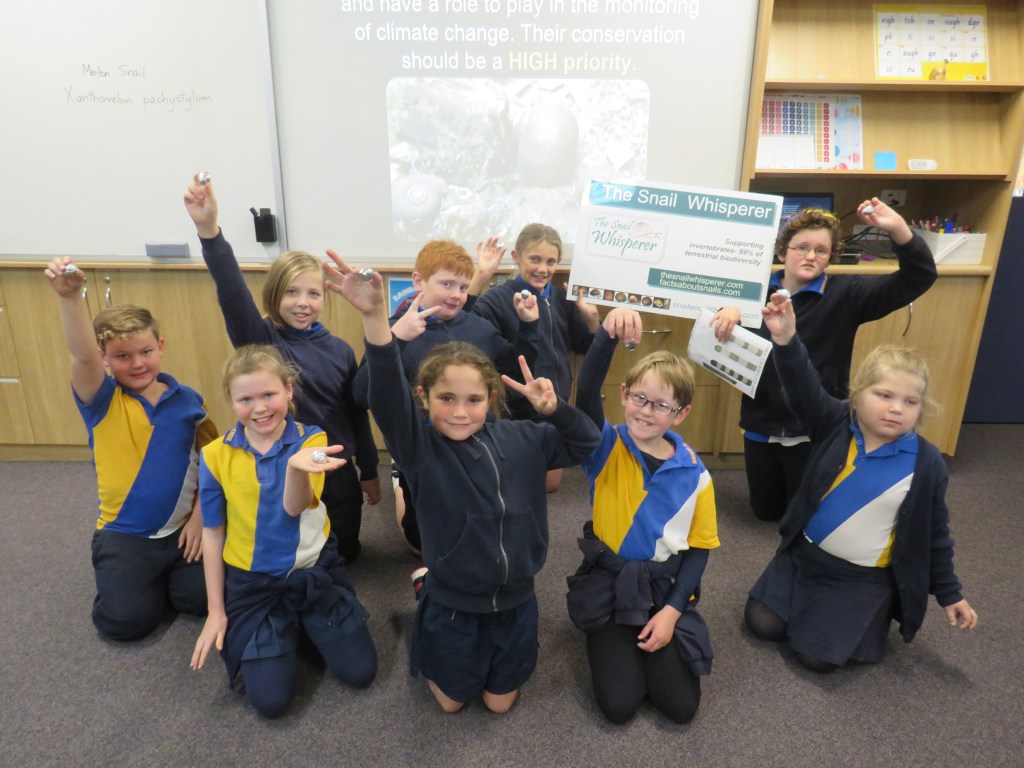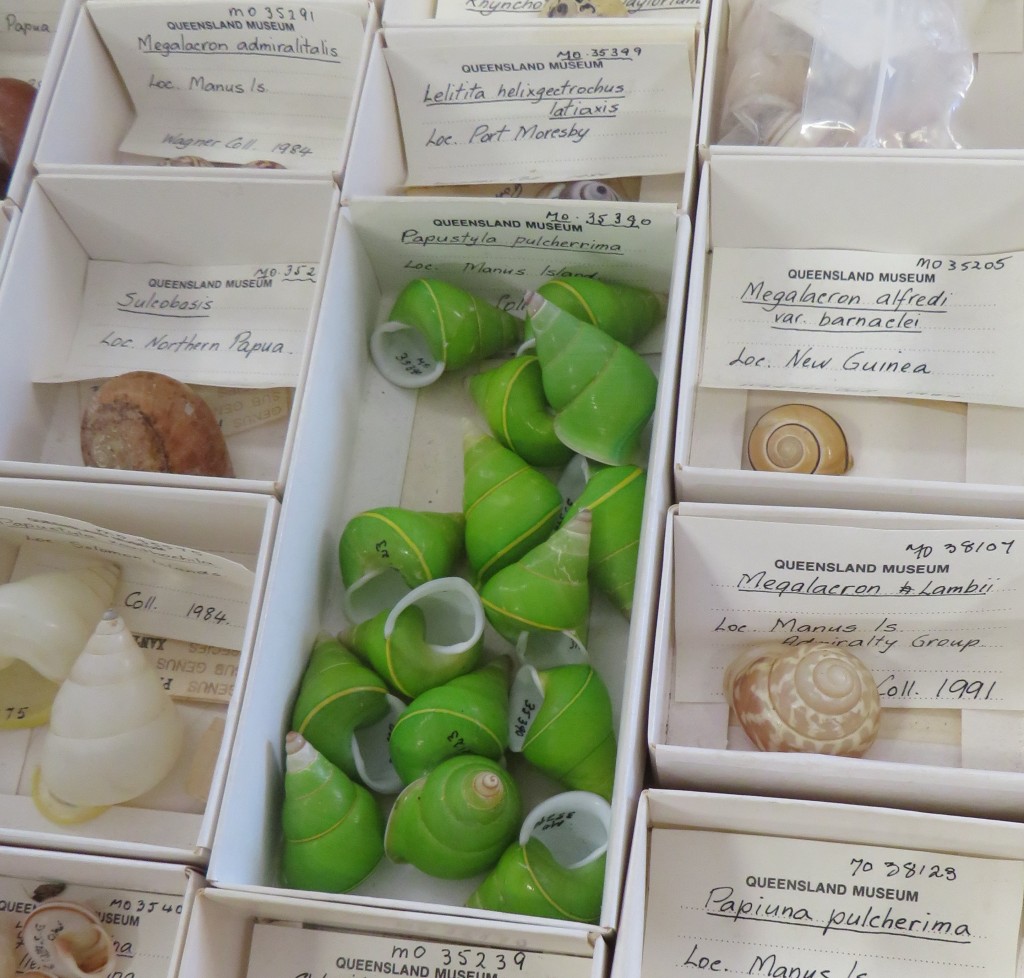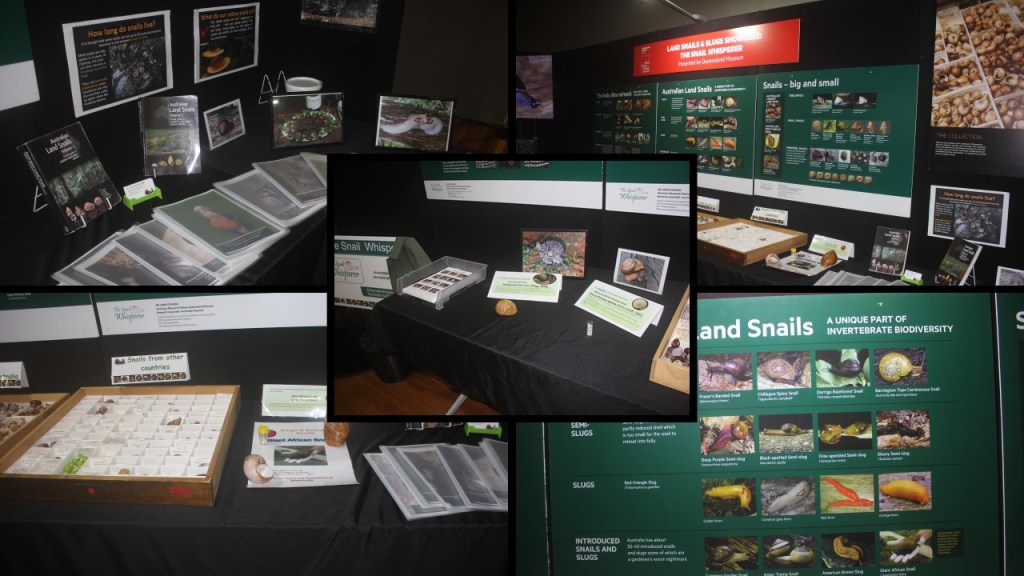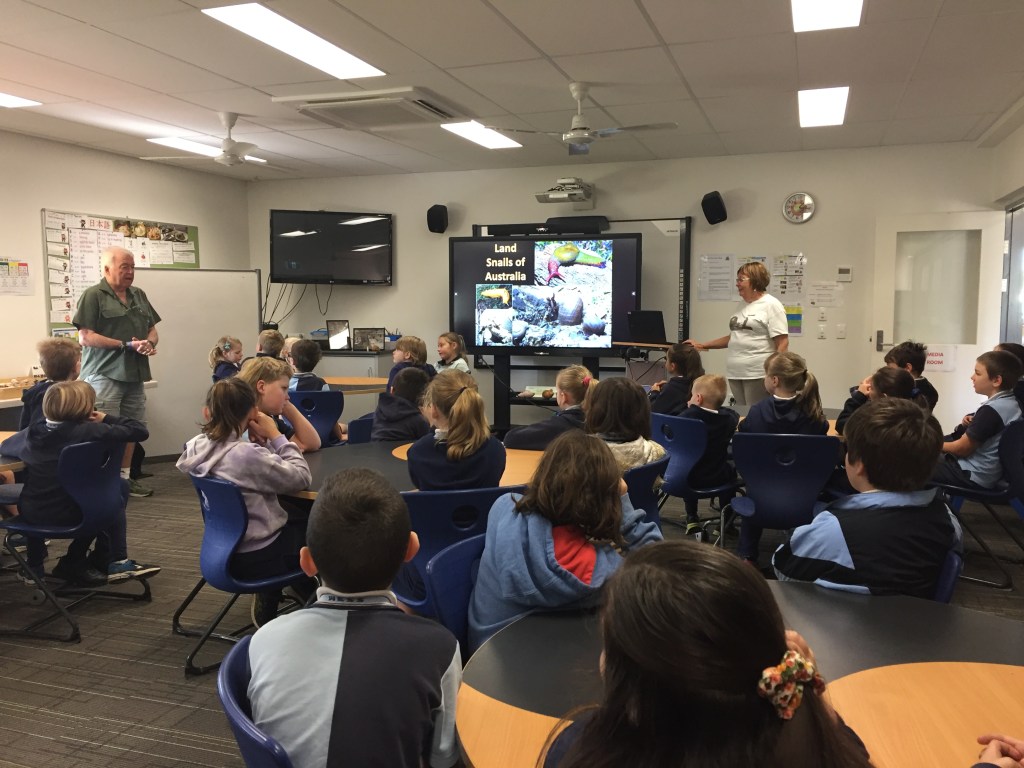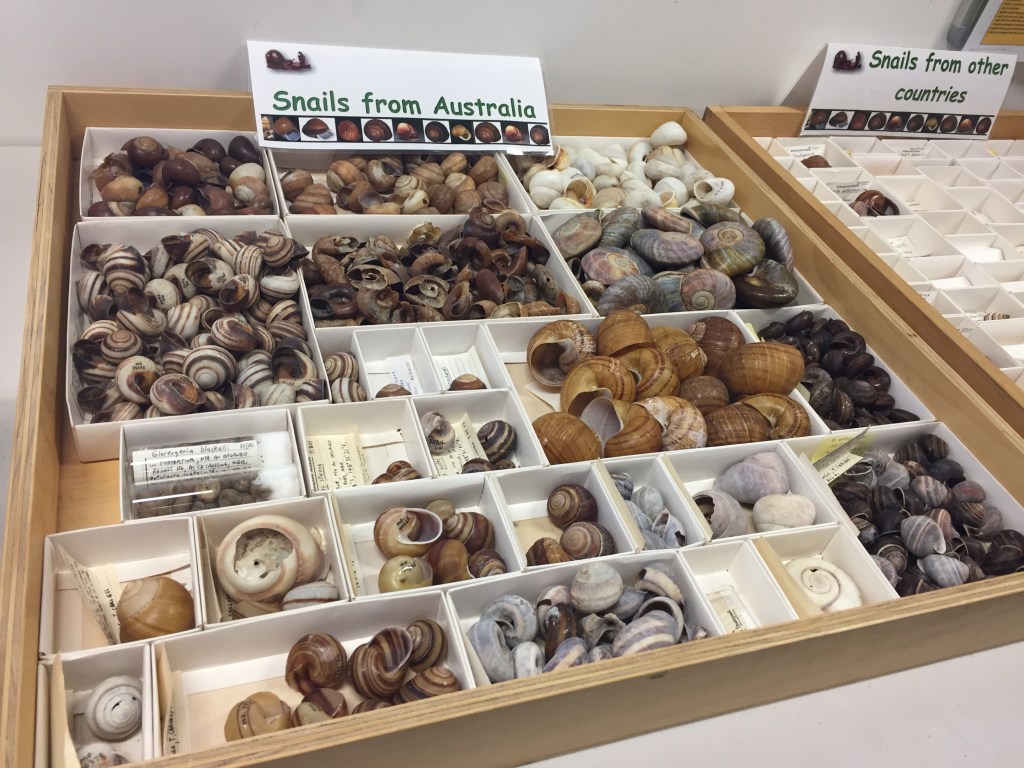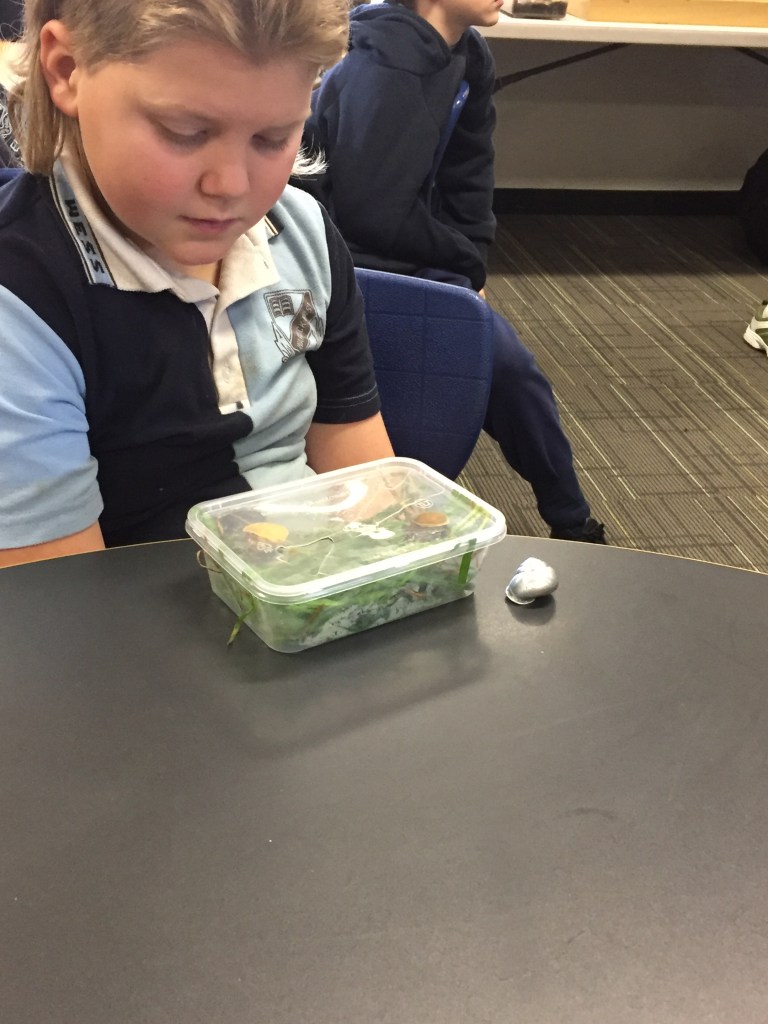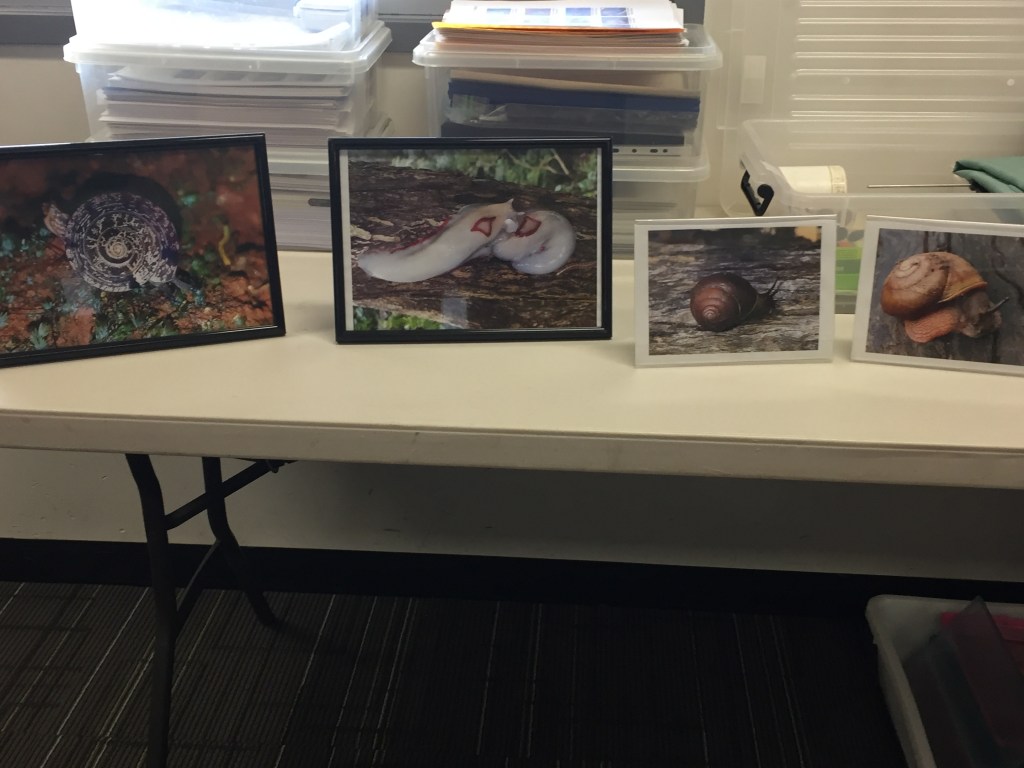Snails have teeth generally 20 000 or more and while they have a similar organisation with central and lateral teeth, their shape is often dependent on the scraping or cutting of their preferred food sources. Teeth are positioned on a radula (multi-toothed feeding ribbon). The teeth are arranged in horizontal rows with the cutting edges (cusps) pointing towards the posterior of the radula which may have 100 teeth per row and 120 rows.
Pulmonate teeth
Pulmonate land snails (about 2500 species in Australia) are characterised by the ability to breathe air which they do via a lunglike pulmonary cavity located within the mantle.
A. SNAIL (Australian fungivore) Figuladra bayensis, Mt Biggenden, Queensland (Biggenden Banded Snail). This snail belongs to the family Camaenidae, one of the major families of land snails of the world and it has a wide diversity of form and of habitat preference. Camaenids are present in all terrestrial habitats in Australia with the exception of the sandy deserts. As a radiation from Asia, the number of species diminishes from north to south in Australia, with no species known to occur in far southwestern Australia nor in Tasmania (exception King Island in Bass Strait).
B. SLUG (fungivore) Cystopeltidae species. This small family of slugs is endemic to eastern and southeastern Australia.
C. SNAIL (carnivore) Protorugosa alpica, Carrai State Forest, NSW (Yellow-banded Carnivorous Snail). This snail belongs to Rhytididae, a family of carnivorous land snails found in Australia, New Zealand, islands of the western Pacific, Indonesia, the Seychelles and South Africa. In Australia, the family is confined to the eastern and southeastern regions except for one species that is found in the southwest of Western Australia. Their diet generally consists of snails and other invertebrates such as earthworms. They are known to be cannibalistic.
D. SEMI-SLUG (fungivore) : Nitor medioxima, Clarence river area, NSW (Dorrigo Glass-snail). This semi-slug belongs to the family Helicarionidae, a large and diverse family of snails distributed from Africa through to south-eastern Asia, the western Pacific and Australia.
E. SNAIL (vegetarian) Cornu aspersum, Callanan Track (European Garden Snail). This snail belongs to Helicidae, is a large family of snails, native to the Palaearctic Region of Europe, western Asia and North Africa. Helicidae contains many species which have been introduced into most temperate regions of the world. Many of these species feed on living-plants and are serious garden pests. These snails were first introduced accidentally in Australia on plants, machinery, etc. They are now widespread and the distribution of several of these species reflects the main road, rail and river transport arteries.
Operculate teeth
Operculate land snails (less speciose and about 130 species in Australia) have an open pallial cavity and an operculum. The operculum is attached to the upper surface of the foot and serves as a sort of ‘trapdoor’ to close the aperture of the shell when the soft parts of the animal are retracted. This is used to seal the shell shut and to prevent drying out.

Images: All fungivores from the family Helicinidae, genus Pleuropoma. Australian species are found mainly in tropical rainforest or vine forest habitats of north-eastern Australia, where some are arboreal and others are associated with limestone outcrops.
A. OPERCULATE SNAIL Pleuropoma talusata, Dingo Beach, Mid-eastern Queensland (Keeled Droplet-snail).
B. OPERCULATE SNAIL Pleuropoma queenslandica, Cameron Creek, Mid-eastern Queensland (Mt Dryander Droplet-snail).
C. OPERCULATE SNAIL Pleuropoma MQ2, Eungella, Queensland.
Further reading:
Solem, A. 1973. Convergence in Pulmonate Radulae. The Veliger 15, 165-170.
Krings, W., Faust, T., Kovalev, A., Neiber, M. T., Glaubrecht, M. and Gorb, S. 2019. In slow motion: radula motion pattern and forces exerted to the substrate in the land snail Cornu aspersum (Mollusca, Gastropoda) during feeding. Royal Society Open Science 6 7), 190222.
Scheel, C., Gorb, S. N., Glaubrecht, M. and Krings, W. 2020. Not just scratching the surface: distinct radular motion patterns in Mollusca. Biol Open 9(10).

